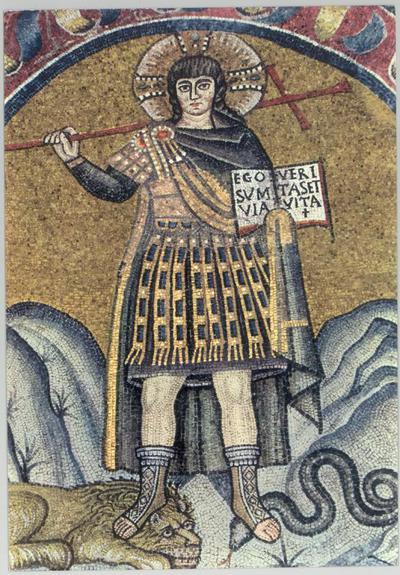27 XI 2025: Jean-Michel Carrié (EHESS), Origins and pagan precedents of christian military chaplains in the late Roman army

Unlike pagan military religion, the Christianization of the army and the transformation of religious practices that it brought about remained largely unexamined for a long time. In particular, the question of the gradual establishment of a chaplaincy attached to each unit was first addressed, very briefly, in a short article by A.H.M. Jones, “Military Chaplains in the Roman Army,” The Harvard Theological Review 46, 1953, pp. 239–240. He identified two chronological landmarks, the Vita S. Sabae by Cyril of Scythopolis (mid-5th century) and letter 2 of Theodoret of Cyrus (died around 458). He rightly rejected Sozomen’s allegation (I, 8) that the institution dates to Constantine. However, Jones strangely retained a limited view of the existence of chaplains. It was therefore necessary to wait 54 years for the subject to be addressed again, by Béatrice Caseau and Jean-Claude Cheynet, “La communion du soldat et les rites religieux sur champ de bataille” (in Mélanges offerts à Pierre Maraval, 2006). Meanwhile, the question of the existence of chaplains and when they first appeared had been carefully avoided in studies dealing with the Christianization of the Roman-Byzantine army, until Winfried Kumpitsch, in his book Adiuta! – Deus! Die Christianisierung des römischen Heereskultes im 4.–6. Jahrhundert, 2024, devotes 13 pages to “Kultische Spezialisten im Heer”). But, like Jones, this author presented the role of chaplaincy in the army as subordinate to that of military command. However, my 1980 text showed how, before Christianity introduced the need for military chaplains, the problem had already arisen for Roman units recruited in the East that were faithful to cults that could only be celebrated by specific priests, and how the Empire had solved the problem by allowing such priests to enlist in their ranks. The starting point for my study was my reaction to the comments of the editors of an inscription from Apulum dating from the early 3rd century, AE 1965, 30. They too had backed down in the face of the evidence of this priest officially enrolled in the ranks of a regular Roman unit. On the contrary, Franz Cumont drew parallels between the frescoes and inscriptions of Dura Europos (the so-called fresco of the tribune’s sacrifice, P. Dura 89) and two Egyptian inscriptions that I placed at the center of my own study. Cumont’s certainty at the time of the existence of such priests in the eastern formations of the Roman army led him to consider a more systematic demonstration unnecessary, so much so that Arthur D. Nock in Harv. Theol. Rev. 45, 1952, undertook a systematic refutation.
These two inscriptions are J. Milne, Greek Inscriptions (General Catalog of Egyptian Antiquities in the Cairo Museum, nos. 9272 (from 316, Aswan rather than Coptos), and 9201 (from 321, Coptos), texts improved by Józef Tadeusz Milik, Recherches d’épigraphie proche-orientale: Dédicaces faites par des dieux (Palmyre, Hatra, Tyr) et des thiases sémitiques à l’époque romaine, Paris 1972. They were engraved five years apart by the same tetrarchic vexillation composed of detachments from two Syrian legions, Legio IIIa Gallica and Legio Ia Illyrica, and Hemeseni sagittarii, identifiable at the vexillatio legionum Orientalium present at Coptos in a papyrus from Panopolis, based on the model of the expeditionary force documented by P.0xy I, 43, Recto (395).
References to such priests, while not numerous, are multiple. A total of 11 military priests, mentioned in 9 documents, attest to the existence of a chaplaincy specially attached to the eastern units of the Roman army. This indispensable role of the priest in Semitic cults appears in the inscriptions, through the formulas per sacerdotem…, sub sacerdote… In these Syrian religions, the priest was, par excellence, the sacrificer. The priest in the Dura fresco may well have stood in the second row of the ceremony, but the ceremony’s effectiveness depended entirely on his presence. Only the priest knew the recipes for ritual purity and the liturgical formulas. This is why Rome, recognizing a religious particularism, made it compatible with its military regulations. In Dura Europos, as in Castellum Dimmidi (fresco in the Palmyrene chapel), the Eastern sacerdos or hiereus is perfectly integrated into the circle of officers and non-commissioned officers of the unit.
The written and pictorial documents studied here therefore attest to the existence of an institutional predecessor that may have normalized the introduction of the Christian military chaplain. The initial question remains: when was this institution established, admitted that it existed in the middle of the 5th century? Although the current trend is to relativize the Christianizing policy of Theodosius I, it is tempting to hypothesize that Christian military chaplains became widespread during his reign. The absence of any mention of them in the Passion of the Theban Legion or in Vitruvius does not contradict this hypothesis. The discretion with which this innovation was introduced is undoubtedly due to the fact that solidarity among soldiers, unlike in civil society, shielded the army from the most violent forms of conflict between paganism and Christianity.
